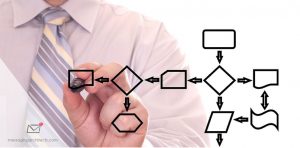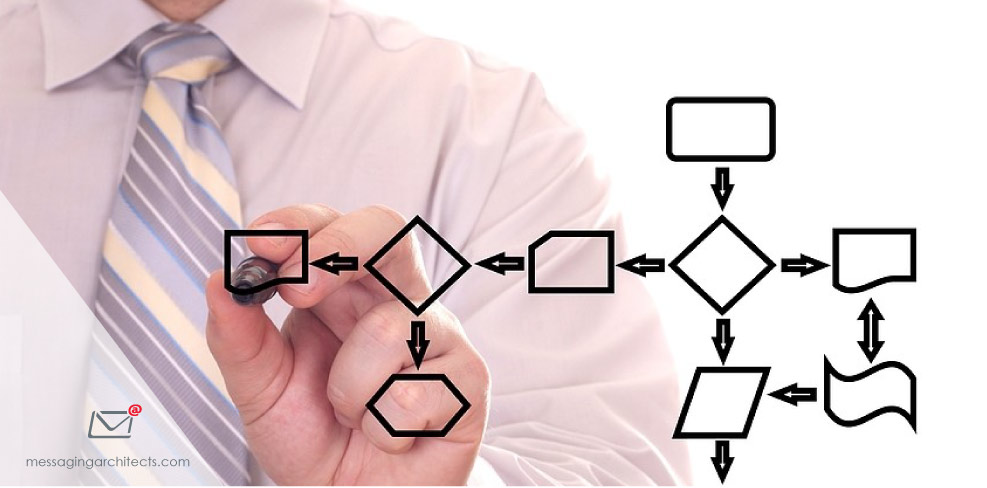Data Governance policies specify who has access to data when, and who is accountable for the information. They also govern how the data is stored and maintained, mapped between systems, secured, backed up, and archived. By visually representing these activities and relationships, business process modeling emerges as an effective tool for enhancing data governance practice.
Business Process Modeling Communicates Policy
The growing number of industry regulatory standards that influence data governance means that more companies have to deal with compliance. These regulations include:
- Sarbanes–Oxley (Financial Reporting)
- Basel I, II, and III (International Banking)
- HIPAA (Healthcare)
- GDPR, CCPA, SHIELD, etc. (Data Protection and Privacy)
Developing business process models for data governance policies helps to document new policies and effectively communicate them throughout the organization.
The models feature a variety of objects that represent people, business units, business rules, and entities. They also identify process artifacts such as tables, views, data stores, data feeds, reports, files, inputs and outputs.
More importantly, they show who is allowed to access the data needed to do their job and who is accountable for the data. Consequently, by referring to the model, employees know who they should talk to when they need to gain access to the data and who makes decisions affecting the data.
Understand Data and Optimize Resources
Models also show how customer data is captured and where it is stored. Mapping depicted in a model enables all stakeholders to correctly understand data across various systems and the integrations between systems.
Data governance process models show data stores used in the archiving process, what is archived when and how long data is retained. Thus, showing processes involving data that is not usually backed up helps to prevent data loss.
They may also outline a critical data breach process. The model can then be communicated to personnel responsible for monitoring breach activity. Having this process outlined and illustrated in advance saves valuable time and resources in case of a breach event.

Business Process Modeling to Enhance Data Governance
By clearly showing process flows, data paths and organizational hierarchies, business process modeling helps to identity practices prone to security, compliance or other risks so audits and controls can be designed to mitigate exposures.
Use business process models to aid regulatory compliance, document and share regulatory processes, streamline controls and audits, demonstrate compliance, and understand how process changes could affect compliance efforts.
They help those responsible for data governance to understand where data is and how it’s used in various processes. This helps to extract more value from the data while limiting risks.
Use Business Process Modeling to realize these Data Governance benefits:
- Adopt centralized, uniform data governance processes
- Clarify governance roles and responsibilities
- Gain visibility and context for compliance efforts
- Paint a clear picture of workflows, including data inputs and outputs
- Support compliance initiatives such as Six Sigma and Sarbanes-Oxley
- Complete regulatory compliance
Use models to help build a business case for data governance. That is, use them to support the advantages of data governance maturity related to growth, cost reductions, risk management and compliance.

What is Business Process Modeling?
As a tool used to document, analyze, automate, and improve operations, business process modeling visually represents a company’s business processes, workflows, and data flows. It employs various graphing methods, such as flowcharts and data flow diagrams.
Use a business process model to map the before and after states of the process. That is, before making any changes or improvements and after implementing the modifications or enhancements to the process.
BPM systems replace the vague flowchart diagrams that business analysts draw on whiteboards with precise models that use standard graphical and XML symbols. In addition, a well-designed architecture allows them to share information with other systems and users.
Business analysts typically perform business process modeling or subject matter experts who possess knowledge of the processes involved or a team that includes both. The business objective is often to increase efficiency or quality or to reduce costs. And as we have shown, it can be a useful tool for data governance.
Data Expertise on Demand
To build an effective data governance program, count on the data experts at Messaging Architects. Anticipate the obstacles and employ the correct technologies to streamline the ongoing effort to achieve compliance and enjoy the maximum value of your data. As the role of data governance expands, we employ decades of data governance experience help you stay ahead of the game.








